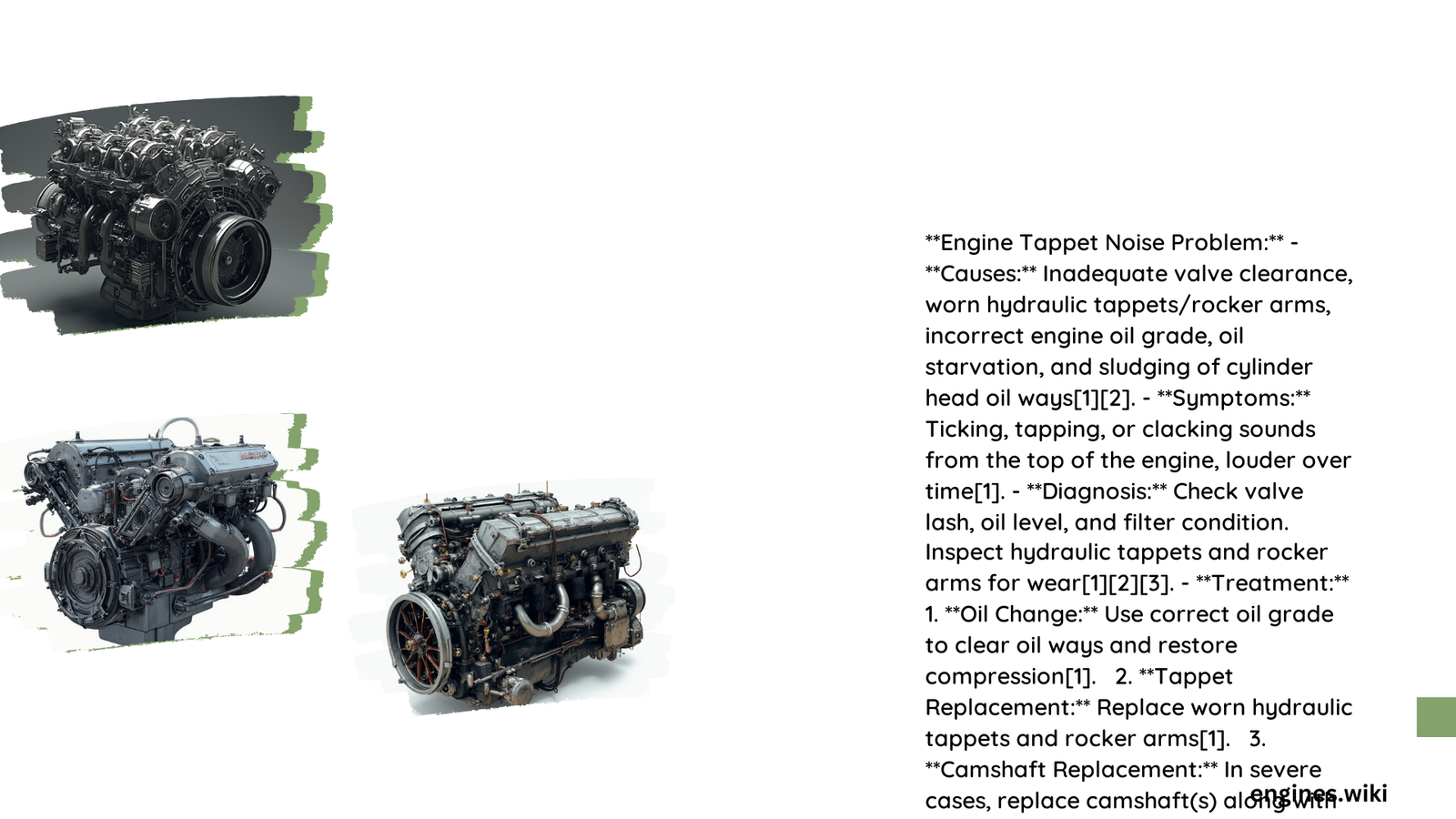Engine tappet noise represents a critical mechanical issue that can signal underlying problems within your vehicle’s engine system. This persistent ticking or tapping sound emerges from the top of the engine, potentially indicating wear, lubrication challenges, or component misalignment that demands immediate professional attention and diagnostic evaluation.
What Causes Engine Tappet Noise?
Why Do Hydraulic Tappets Wear Out?
Hydraulic tappets experience deterioration through multiple mechanisms:
- Lubrication Breakdown: Insufficient oil quality or quantity accelerates component wear
- Contamination: Dirt and debris obstruct critical oil passages
- Mechanical Stress: Continuous engine operation creates gradual component degradation
What Mechanical Factors Contribute to Tappet Noise?
| Factor | Impact | Potential Consequences |
|---|---|---|
| Low Oil Pressure | Reduces lubrication | Increased friction, component wear |
| Misaligned Components | Disrupts valve operation | Irregular valve movement |
| Exhaust System Leaks | Creates compression irregularities | Performance reduction |
How Can You Diagnose Tappet Noise?
Noise Characteristics
- Distinct ticking sound from engine top
- More pronounced during cold starts
- Increases with engine load
- Potentially variable based on RPM
Diagnostic Approach
- Listen to noise location and frequency
- Check oil levels and quality
- Inspect hydraulic tappets
- Evaluate overall engine performance
What Are Effective Repair Strategies?
Comprehensive Repair Steps:
– Perform complete oil and filter change
– Inspect hydraulic tappets for wear
– Replace damaged components
– Adjust valve clearances if applicable
– Address potential exhaust system leaks
What Are Potential Repair Costs?
Estimated Repair Expenses:
– Basic oil change: $50-$100
– Tappet replacement: $500-$2,000
– Comprehensive camshaft repair: $1,000-$5,000
When Should You Seek Professional Help?
Immediate Professional Consultation Recommended If:
– Noise persists after initial diagnostics
– Performance degradation occurs
– Multiple mechanical symptoms emerge
– Repair complexity exceeds personal expertise
Prevention Strategies
Proactive Maintenance Techniques:
– Regular oil changes
– Use high-quality engine lubricants
– Follow manufacturer’s maintenance schedule
– Address minor issues promptly
– Conduct periodic professional inspections
Technical Insights
Engine tappet noise represents a complex mechanical phenomenon requiring systematic diagnostic approach. While some issues can be resolved through basic maintenance, complex scenarios demand specialized technical intervention.
Expert Recommendations
- Never ignore persistent engine noises
- Maintain comprehensive service records
- Use manufacturer-recommended components
- Prioritize preventative maintenance
Warning Signs Requiring Immediate Action
Critical Indicators:
– Increasing noise intensity
– Reduced engine performance
– Unusual vibration patterns
– Inconsistent engine operation
Conclusion
Understanding and addressing engine tappet noise requires technical knowledge, systematic diagnostics, and timely intervention. Professional assessment remains the most reliable method for comprehensive resolution.

